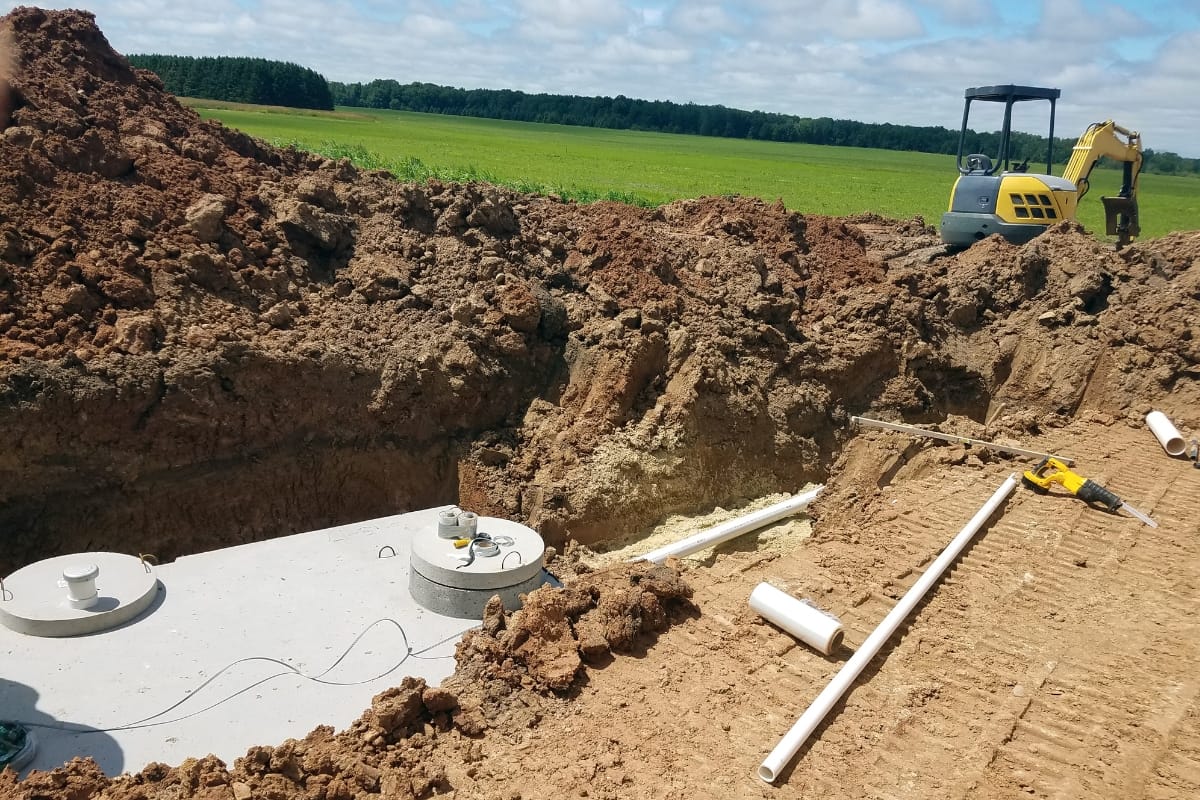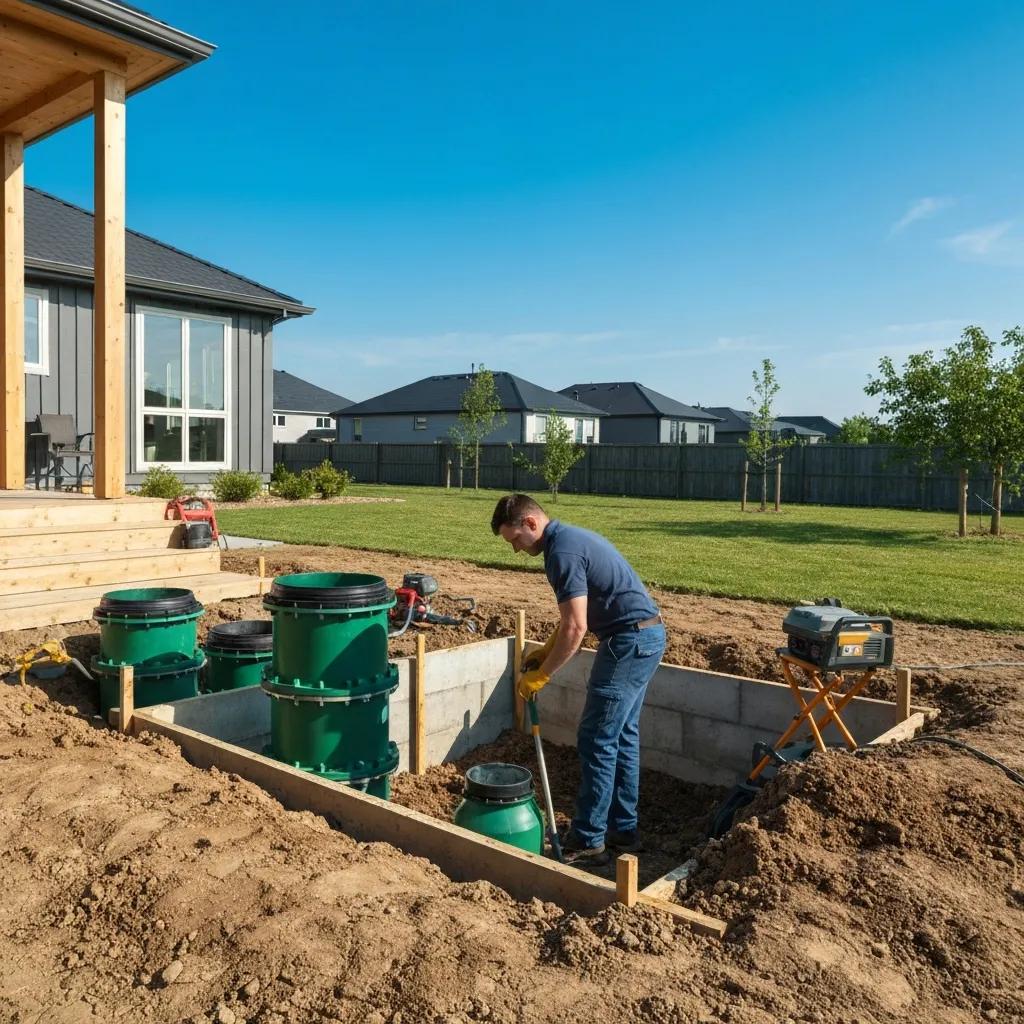When planning a septic tank project, choosing the right materials is crucial for longevity and efficiency. Understanding the best septic tank materials available can save time and money while ensuring your system functions properly.
Exploring material options allows homeowners and businesses to make informed decisions. Keep reading to discover what factors influence material selection and how to navigate local regulations for your septic tank project!
Key Takeaways For Septic Tank Materials
Evaluating the Best Materials for Septic Tanks
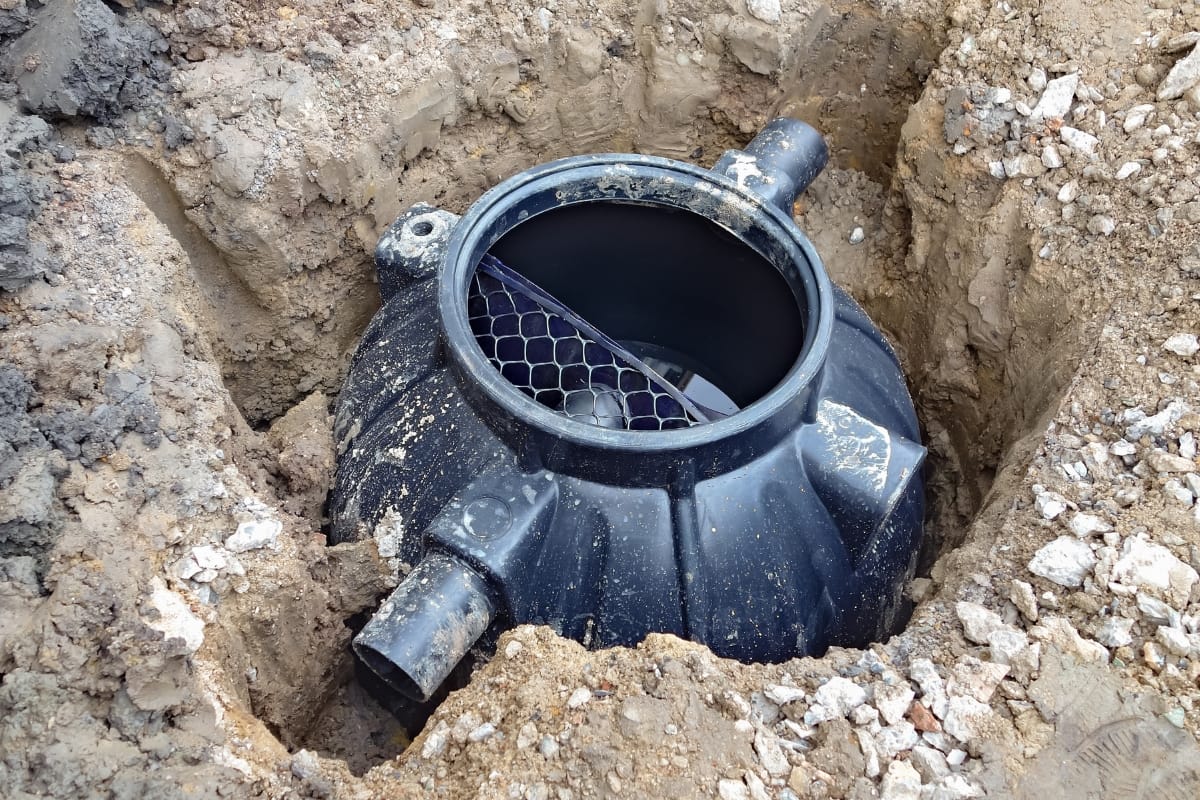
Choosing the right material for a septic tank is crucial for effective wastewater treatment and overall system efficiency. Understanding these materials helps homeowners and business owners make informed decisions regarding their trench systems and the long-term management of their wastewater needs.
Advantages of Concrete Septic Tanks
Concrete septic tanks excel in managing wastewater due to their robust structure and durability. They effectively contain waste and allow for optimal nutrient breakdown, which is essential for maintaining healthy soil.
Unlike plastic tanks that may falter under pressure, concrete tanks provide reliable performance, ensuring that every drop of wastewater is treated properly before returning to the environment.
Benefits of Fiberglass Septic Tanks
Fiberglass septic tanks are known for their lightweight structure, making them easy to transport and install. This property allows for quicker setup, reducing labor costs and time on the project.
Additionally, fiberglass tanks can effectively harbor bacteria necessary for the decomposition of waste, minimizing the risk of backups and ensuring efficient wastewater management.
Another advantage of fiberglass tanks is their resistance to corrosion, which is crucial in preventing leaks and maintaining the integrity of the system over time. Stainless steel components can be integrated to enhance the overall durability and functionality of the tank. These features contribute to a reliable solution for both residential and commercial sewage needs.
Why Choose Plastic Septic Tanks
Plastic septic tanks are an attractive option for many users due to their solid structure and ease of installation.
These lightweight systems are often molded using advanced machines, allowing for efficient production and quick setup. Additionally, plastic tanks manage sewer gas more effectively and promote biodegradation, ensuring that waste breaks down properly while reducing the risk of odors or backups.
Choosing the right materials is just the beginning of creating an efficient septic system. Several key factors play a vital role in determining which materials will best suit your needs.
Factors Influencing Septic Tank Material Selection
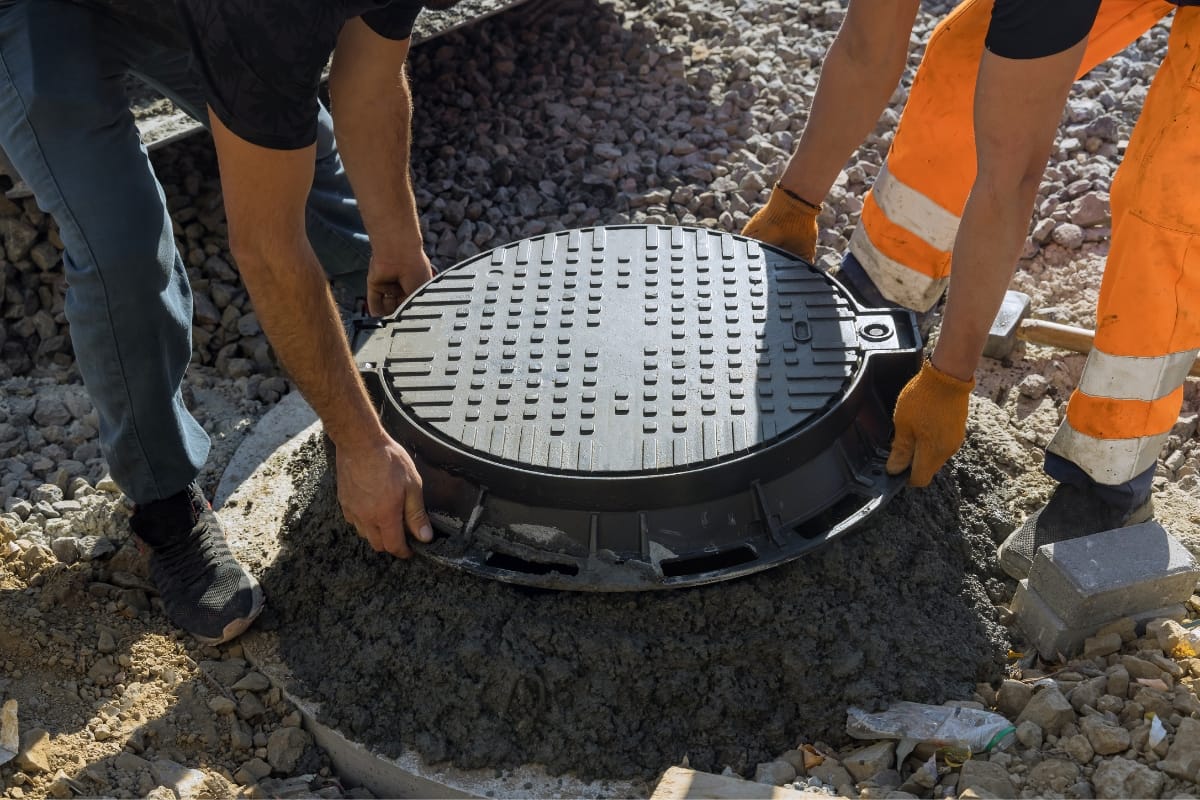
Selecting the right material for a septic tank goes beyond just personal preference; it involves careful consideration of various factors that can significantly affect performance. Considering these aspects ensures that the chosen material meets the specific needs of any project.
Assessing Soil Conditions for Different Materials
When assessing soil conditions for septic tank materials, it’s essential to consider how sand and other soil types impact drainage and overall system performance.
Well-drained sandy soil can facilitate the movement of wastewater, allowing for effective sludge decomposition and reducing the need for frequent pump maintenance.
Conversely, if groundwater levels are high or the soil is compact, the pipes might struggle to manage wastewater flow, leading to potential backups and inefficient filtration.
The Impact of Climate on Material Durability
The climate significantly affects the durability of septic tank materials. For instance, areas with fluctuating temperatures can put pressure on tanks, potentially leading to cracks or failures if materials are not chosen wisely.
Regular inspection is crucial in these regions to ensure that components like the sump pump are functioning properly, safeguarding the efficiency of sewage treatment processes.
Considering Household Size and Usage
Household size and usage play a significant role in determining the ideal septic tank material. A larger family may produce more wastewater, prompting the need for a durable tank made from steel or concrete that can handle the increased load.
Additionally, if the water table is high or nearby wetlands are present, opting for a gravel drainage system can improve performance by promoting efficient groundwater absorption and preventing backups.
Understanding the factors that impact septic tank material choices sets the stage for the next important aspect: cost. Get ready to break down the numbers and see how different materials affect your budget!
Cost Analysis of Septic Tank Materials

Understanding the costs associated with different septic tank materials helps homeowners and businesses make better financial decisions. Balancing initial costs with ongoing maintenance and reliability is key to achieving the perfect balance for any septic system project.
Initial Costs vs. Long-Term Investments
When deciding between materials like polypropylene and concrete for a septic tank, initial costs can vary significantly. While polypropylene tanks may offer a lower upfront price, their longevity and efficiency compared to concrete tanks often mean higher long-term expenses, especially if a reliable water filter system is needed over time.
Choosing the right tank material now can help prevent costly repairs and replacements down the road.
Maintenance and Replacement Costs Overview
Maintenance and replacement costs are essential considerations when choosing septic tank materials. Concrete tanks typically require less frequent repairs, making them cost-effective over time, while fiberglass tanks may need occasional inspections but often offer good durability.
Plastic tanks, although cheaper upfront, might incur higher costs down the road due to their susceptibility to damage in challenging environments.
| Material Type | Maintenance Frequency | Typical Replacement Costs |
|---|---|---|
| Concrete | Low | $1,000 – $3,000 |
| Fiberglass | Moderate | $800 – $2,500 |
| Plastic | High | $600 – $1,800 |
Finding the Best Value for Your Septic System
Finding the best value for a septic system involves balancing initial investment with long-term maintenance and efficiency.
Homeowners and businesses should evaluate how different materials will perform over time and consider any potential repair costs down the road. Investing in a durable option like concrete might seem pricier upfront, but it can save money in the long run by reducing the need for frequent repairs or replacements.
Once the costs of septic tank materials are clear, it’s time to think about how these choices affect installation and long-term upkeep. Proper planning in these areas can save headaches and expenses down the road, making your septic system even more reliable.
Installation and Maintenance Considerations
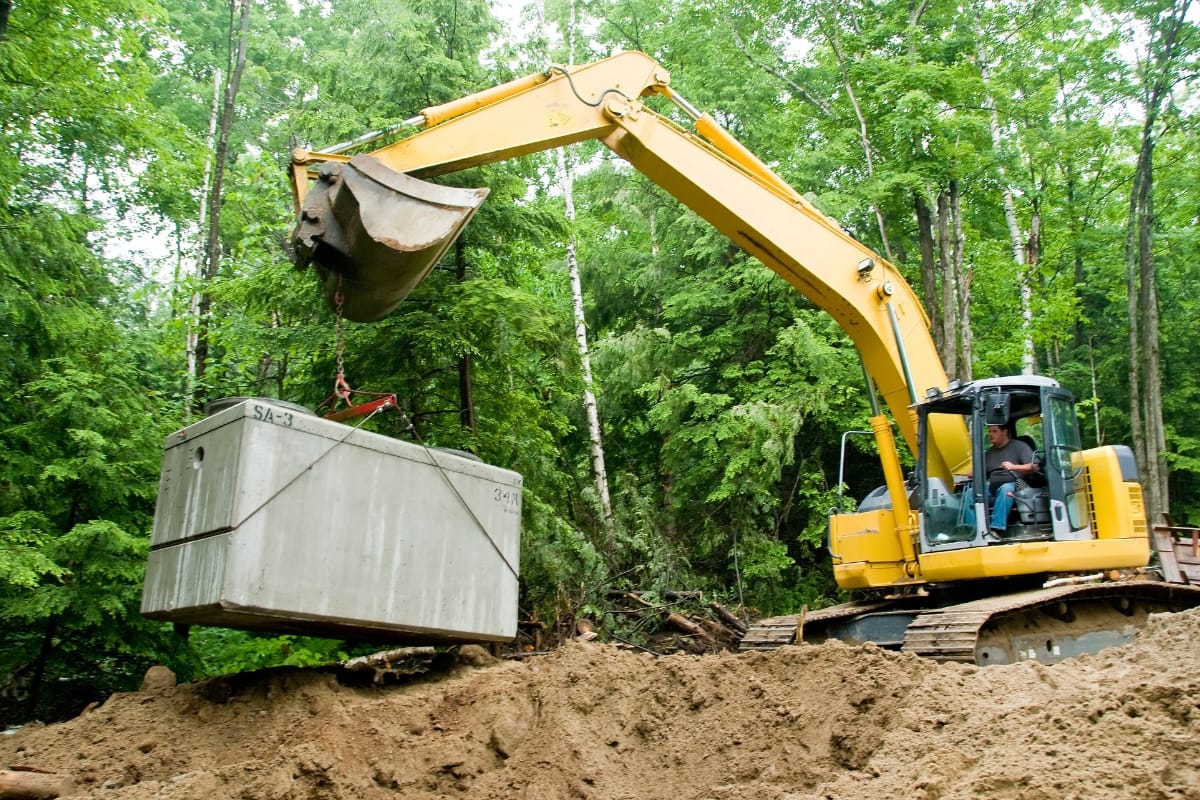
Addressing installation and maintenance needs is vital for choosing the right septic tank material. Each type—concrete, fiberglass, and plastic—offers different levels of ease when it comes to installation, which can affect the overall project timeline and labor costs.
By opting for materials that fit both installation preferences and maintenance strategies, individuals can ensure their septic system remains reliable for years to come.
Ease of Installation by Material Type
When it comes to installing septic tanks, the material selection plays a significant role in how straightforward the process will be.
Concrete tanks, while sturdy, usually require more heavy equipment and a longer setup time due to their weight. In contrast, fiberglass and plastic tanks are much lighter, making them easier to maneuver and install quickly on site, which can save on labor costs and time.
- Concrete tanks require heavy equipment for installation.
- Fiberglass and plastic tanks are lightweight and easier to handle.
- Choosing the right material can impact labor costs and installation speed.
Maintenance Requirements for Concrete, Fiberglass, and Plastic
Concrete septic tanks generally require low maintenance, needing occasional inspections to ensure they continue to perform well.
Their sturdy design can withstand the test of time, often making them a reliable choice for those seeking longevity. In contrast, fiberglass tanks might require more frequent checks, particularly in terms of connections and seals, to maintain their efficiency, but they still offer good durability with proper care.
Plastic tanks, while lightweight and easy to install, often demand higher maintenance attention due to their vulnerability in certain conditions.
They can be affected by extreme temperatures and ground movements, so regular monitoring is crucial to avoid potential issues. Homeowners opting for plastic must stay proactive to ensure their systems run smoothly and efficiently.
How to Prolong the Life of Your Septic Tank
To prolong the life of a septic tank, regular inspections are essential. Keeping an eye on the system helps catch any potential issues early on, ensuring smoother operation.
Additionally, minimizing the input of harsh chemicals and keeping large items out of the tank can prevent unnecessary wear and tear, enhancing its durability over time.
As the installation and maintenance of your septic system come to a close, it’s time to look forward. Unraveling local regulations and standards is key to ensuring your system operates within the guidelines.
Navigating Local Regulations and Standards

Understanding local regulations is a key part of choosing the right materials for septic tanks. Each area has specific codes that dictate which materials are acceptable and under what circumstances.
By staying informed about these local requirements, individuals can make decisions that not only meet their project needs but also align with state and local environmental standards.
Understanding Local Codes for Septic Tank Materials
When it comes to selecting materials for septic tanks, every homeowner or builder needs to be aware of local codes.
These regulations guide which materials can be used and the installation practices that must be followed to ensure safety and environmental compliance. Adhering to these standards helps maintain the integrity of wastewater systems and protects precious groundwater resources.
Local regulations can include rules about the materials allowed, installation proximity to water sources, and property line restrictions. Familiarizing oneself with these codes can prevent costly mistakes and enhance site-specific planning:
- Check local building codes and permits.
- Understand regulations on material restrictions.
- Follow guidelines for environmental safety.
Permitting Process and Material Restrictions
The permitting process for septic tanks involves various steps that ensure compliance with local regulations.
Homeowners or builders typically need to submit plans for approval, detailing the design and materials they intend to use. Each area may have specific guidelines concerning acceptable materials, installation proximity to water sources, and necessary safety measures.
Understanding these restrictions is essential, as they help protect the environment and local water supplies. Adhering to codes can prevent costly rework or penalties down the road, ensuring that the septic system integrates seamlessly with local ecosystems.
- Submit plans for septic tank design and materials for approval.
- Check local codes for environmental compliance and safety measures.
- Adhere to regulations to avoid costly penalties and preservation of resources.
Ensuring Compliance With Environmental Regulations
Homeowners and builders must actively ensure compliance with environmental regulations when selecting septic tank materials.
These regulations often focus on protecting local ecosystems and groundwater, so thorough research is essential. By adhering to established environmental standards, individuals can prevent potential harm to their surroundings while also avoiding costly fines or rework for non-compliance.
Conclusion
Choosing the best materials for your septic tank is key to ensuring a system that’s durable, efficient, and suited to your property’s unique needs. By selecting the right materials, you’ll reduce long-term maintenance costs and promote a system that performs reliably over the years.
For expert guidance on selecting and installing the perfect septic system, trust the team at Smart Septic Pros. Contact us at 678-993-4545 or fill out our online contact form to discuss your project needs and get started!
